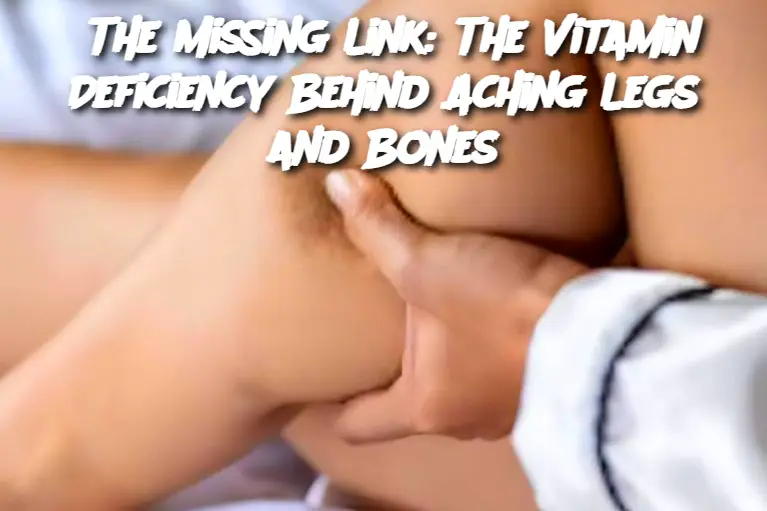ADVERTISEMENT
Introduction
Do your legs feel heavy, sore, or restless? Are your bones aching for no apparent reason? While many factors can contribute to muscle and bone discomfort—like overexertion or aging—persistent pain might signal a deeper issue: a vitamin deficiency. One of the most commonly overlooked causes is a lack of Vitamin D, a nutrient essential for bone strength, muscle function, and overall well-being. In this article, we’ll explore the vital role Vitamin D plays, how to replenish it naturally, and practical ways to support your body with food and lifestyle changes.
Ingredients (Key Nutrients and Foods to Support Bone & Leg Health)
To help your body overcome Vitamin D deficiency and ease discomfort, include the following in your daily intake:
Fatty fish (like salmon, mackerel, sardines) – rich in Vitamin D and omega-3s
Egg yolks – a natural source of Vitamin D
Fortified foods – such as milk, orange juice, and cereals
Mushrooms exposed to sunlight – like maitake or UV-treated button mushrooms
Cod liver oil – high in both Vitamin D and A
Leafy greens (like spinach, kale) – not high in Vitamin D, but rich in calcium and magnesium
Nuts and seeds – especially almonds and sunflower seeds for bone-supporting minerals
Supplements – Vitamin D3 is often recommended if levels are critically low
Instructions (How to Rebuild Vitamin D and Support Bone Health)
Get tested:
First, ask your doctor for a blood test to measure your Vitamin D levels. This helps determine if a deficiency is causing your symptoms.
Add sunlight to your routine:
Spend 15–30 minutes in natural sunlight several times per week. Exposing arms, legs, and face (without sunscreen) helps your skin synthesize Vitamin D naturally.
Incorporate Vitamin D-rich foods daily:
Include fatty fish twice a week, use fortified products, and cook with eggs and mushrooms regularly.
Balance with calcium and magnesium:
Vitamin D helps your body absorb calcium, but it works best when paired with a diet rich in other bone-building minerals. Pair leafy greens, nuts, and dairy for maximum effect.
Use supplements wisely:
If diet and sunlight aren’t enough, a daily Vitamin D3 supplement (usually 1000–4000 IU) may be needed. Always consult a healthcare professional before starting supplements.
Serving and Storage Tips (Maintaining Vitamin D through Lifestyle)
Meal Planning:
Prep weekly meals with a mix of Vitamin D and calcium-rich foods. Try grilled salmon with steamed greens or scrambled eggs with sautéed mushrooms.
Storage Tips:
Store fatty fish in the freezer if bought fresh, and keep supplements in a cool, dark place to preserve potency.
Sunlight Schedule:
Plan short outdoor walks during midday when the sun’s rays are strongest—just 15 minutes can make a big difference.
Variations (Alternative Ways to Boost Vitamin D and Ease Leg Pain)
ADVERTISEMENT
